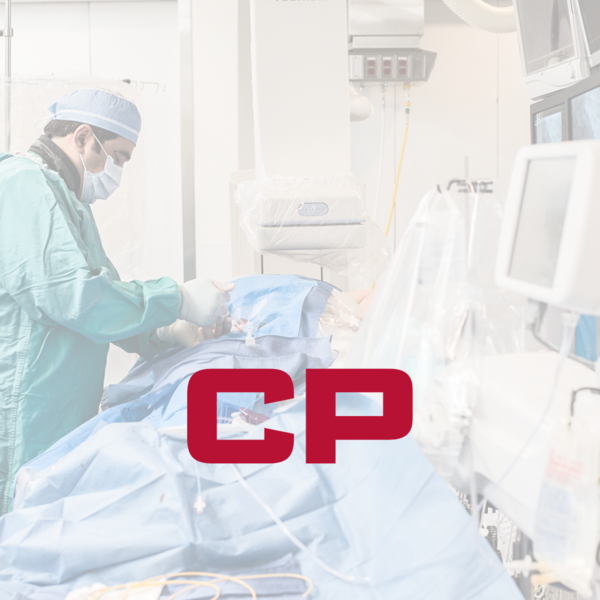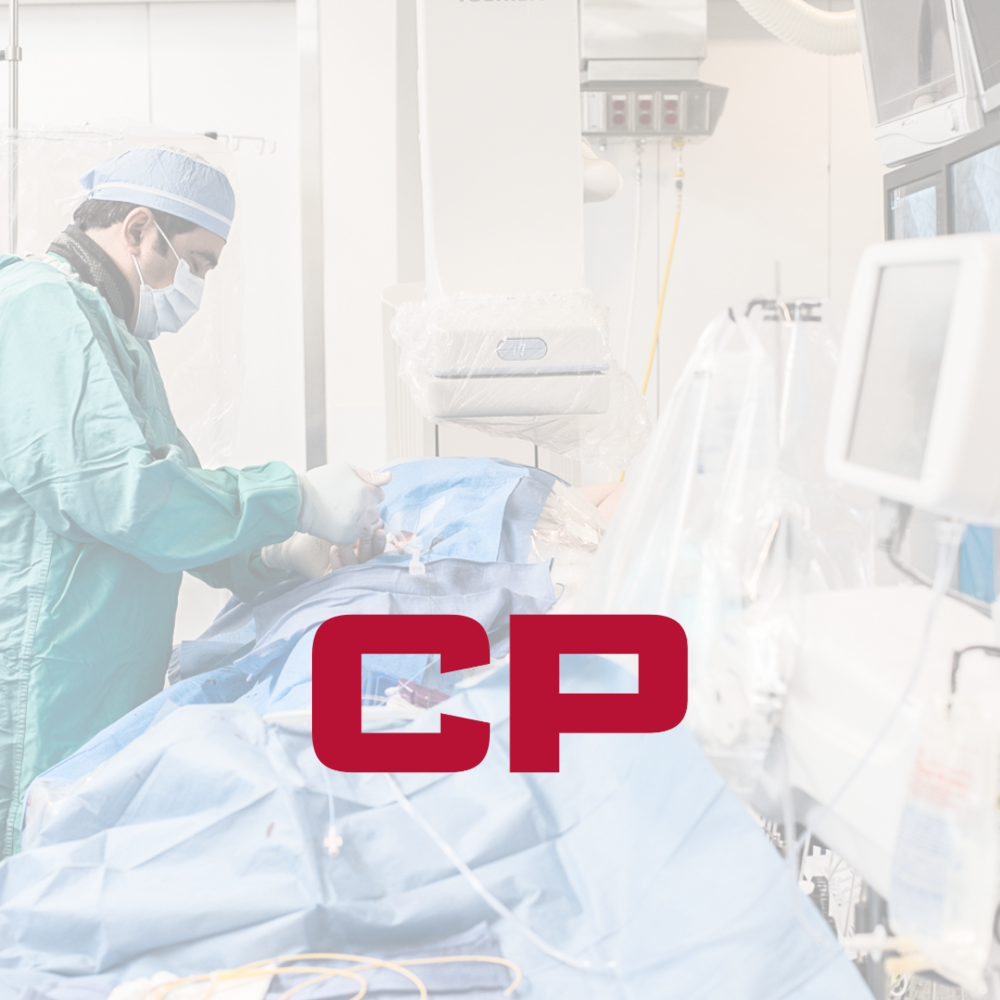Stories With HeartNew LUCAS chest compression device saves patients and doctors alike—Thank you CP!
Posted on: May 31, 2021CP donated $18,000 to the CK Hui for the purchase of a new LUCAS automated chest compression device. The device performs consistent, effective CPR which assists COVID-19 patients, reduces risks for care providers, and removes delays.

As we have come to learn, COVID-19 can have devastating effects on one’s cardiopulmonary systems.
Staff and researchers at the Royal Alex have been hard at work to streamline and improve the treatment of COVID-19 patients since the start, especially those with cardiac complications.
Fortunately, there is good news to share.
Now, thanks in large part to Canadian Pacific and their extremely generous donation of $18,000, the CK Hui Heart Centre is now better equipped to treat these patients, and protect its care providers in the process. The centre has acquired a new LUCAS device, an advanced automated chest compression device.
CP, a longtime supporter of cardiac health, shared the following sentiment for their gift:
“It is very important to CP that we invest in the communities we operate in and through, and we are honoured to have donated over $18,000 to support the purchase of an Automated Cardiac Chest Compression Device for the CK Hui Heart Centre. This donation will ensure the Royal Alexandra Hospital continues to provide the very best care possible to Edmonton and area. Since 2014, CP Has Heart has helped raise over $23.3 million for cardiac causes across North America, including right here in Edmonton.”
- Adam Smith, CP Superintendent Operations – Alberta North
See here for the official press release
Located in the CK Hui’s Catheterization Lab, the LUCAS device essentially works by performing consistent, mechanical CPR on a patient—even if the patient is prone—freeing up a healthcare professional who would otherwise be performing manual compressions, and reducing risks and delays in several other ways.
While it is common to treat COVID-19 patients while prone, as patients oxygenate better in that position, they are often turned over to the belly-up position for resuscitation (the ‘supinate-first’ approach). However, turning a patient over increases risk of COVID-19 exposure to the attending physicians, and of course takes time, energy, and staff.
The new LUCAS device at the CK Hui is being used to optimize treatment of patients in the prone position and alleviate issues such as these, as it allows patients to remain prone while receiving effective chest compressions.
In fact, researchers with the Royal Alex recently published new research that explains the effectiveness of the new approach, entitled, “Prone mechanical cardiopulmonary resuscitation (CPR): Optimal supine chest compression metrics can be achieved in the prone position.”
In the findings from Douma et al, the researchers summarize the benefits saying, “In short, these devices may allow for less rescuers, less delay and less risk than a supinate-first approach.”
As it was said by Matthew Douma, Clinical Nurse Educator with the Royal Alex (and lead researcher for the above), “Not only has the LUCAS device protected staff from contracting COVID-19 multiple times per week, it has allowed the Royal Alexandra Hospital to make an impact in the COVID-19 scientific knowledge base, using it on patients who are placed in the prone position, (belly-down) in order to oxygenate better.”
Staff at the Royal Alex could not be more grateful for the compassion, improved care, and far-reaching benefits provided by CP and the new LUCAS chest compression device.
“Thank you CP! Your commitment to the CK Hui Heart Centre is inspiring. The automated chest compression device which was purchased thanks to your support will protect our staff and help save lives.”
- Dr. Benjamin Tyrrell, Director of the CK Hui Cardiac Catheterization Lab, Cardiac Intensive Care Unit
Please join us in thanking CP for their continued commitment to supporting the health of its communities! This generous donation is great news for patients, hospitals staff and fellow donors alike, as the new equipment—and resulting research—is sure to make a major positive impact in the care of Albertans and continued fight against COVID.
